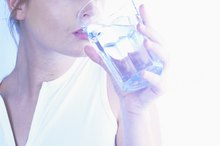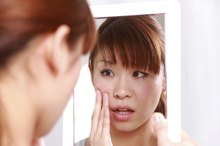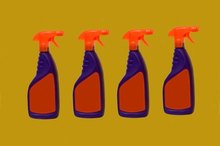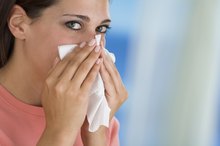Chapped Lips and Allergies
Allergies can be the direct or indirect cause of chapped lips, or cheilitis. Some people develop the problem due to allergies to substances touching the lips, including toothpaste and lip care products. Others may develop dry, cracked lips when they are congested from sinus infections related to persistent nasal allergy attacks, or allergic rhinitis, that make it difficult to breathe through the nose. Mouth breathing leads to chapping. See your doctor if your chapped lips do not respond to over-the-counter treatment.
Usual Causes of Chapping
Lips mainly become dry from lack of proper hydration, mouth breathing due to congestion, contact with allergens and overexposure to weather extremes, such as:
- wind
- cold
- heat
- sunlight
Licking your lips to moisten them increases the problem. It notes that saliva dries rapidly and causes lips to become drier than before you licked them. Lipcare products can help to minimize chapping provided you aren't allergic to any of their ingredients and are drinking sufficient fluids. Wrapping a scarf over your lips when out in cold, dry weather may also help prevent this problem.
- Lips mainly become dry from lack of proper hydration, mouth breathing due to congestion, contact with allergens and overexposure to weather extremes, such as: * wind
* cold
* heat
* sunlight Licking your lips to moisten them increases the problem. - Lipcare products can help to minimize chapping provided you aren't allergic to any of their ingredients and are drinking sufficient fluids.
Lipcare Allergens
Allergic Reaction to Hair Product: Scaly Dry Rash on Neck
Learn More
Allergic contact occurs when certain allergens linger on the lips 1. These substances, which are mostly chemical ingredients in lip care products, cause lips to swell, crack and chap. However, chemicals in sunscreen, acne medication and toothpaste can also adversely affect delicate lip skin 3. One well-known allergen in lip care products is the preservative propyl gallate, which keeps the moisturizing oils in cosmetics from spoiling. It also notes that lipstick often comes in contact with a common metallic allergen -- nickel -- through its metal tubes.
Toothpaste Allergens
Toothpaste is the second most common cause of lip contact allergies 3. Although reactions are rare, research has identified 30 allergens that most toothpastes contain. These include flavorings -- such as mint, cinnamon and licorice -- as well as substances that provide anti-inflammatory, antiseptic and plaque protection. One anti-inflammatory agent that is allergenic is azulene, a derivative of chamomile flowers and a relative of guaiazulene, which is a blue pigment that also can cause lip irritation. If you suffer from persistent chapped lips and notice that a cosmetic or oral hygiene product seems to irritate your lips, an allergist may be able to help you pinpoint and avoid the irritant.
- Toothpaste is the second most common cause of lip contact allergies 3.
- One anti-inflammatory agent that is allergenic is azulene, a derivative of chamomile flowers and a relative of guaiazulene, which is a blue pigment that also can cause lip irritation.
Allergies and Sinusitis
Home Remedies for a Swollen Throat
Learn More
Sinusitis is a bacterial infection that builds in the cavities of the skull. It develops in pockets behind the cheek bones, around the eyes and behind the nose due to trapped congestion from a virus or allergic rhinitis. Symptoms include:
- headaches
- toothaches
- earaches
- a thick nasal discharge
- post-nasal drip
- fever
Allergic rhinitis makes you more susceptible to sinusitis, because it congests membranes and passages, which makes it difficult for fluid to drain. This makes it difficult to breathe through the nose and causes mouth breathing, which leads to lip licking and chapped lips. Medical intervention through your primary care doctor or allergist can help to eliminate or minimize the congestion and mouth breathing.
- Sinusitis is a bacterial infection that builds in the cavities of the skull.
- This makes it difficult to breathe through the nose and causes mouth breathing, which leads to lip licking and chapped lips.
Related Articles
References
- Indian Dermatology Online Journal: Investigation of Contact Allergy to Dental Materials by Patch Testing
- Indian Journal of Dermatology: Cheilitis Granulomatosa: A Case Report with Review of Literature
- The Journal of Clinical and Aesthetic Dermatology: Toothpaste Allergy Diagnosis and Management
- American Academy of Dermatology Sunscreen FAQs
Writer Bio
Alicia Rudnicki's Library Mix website blends book buzz for all ages. A gardener, she writes for California's Flowers by the Sea nursery. She has a Bachelor of Arts in journalism from UC Berkeley, a Master of Arts in education from CU Denver, and has taught K-12.







